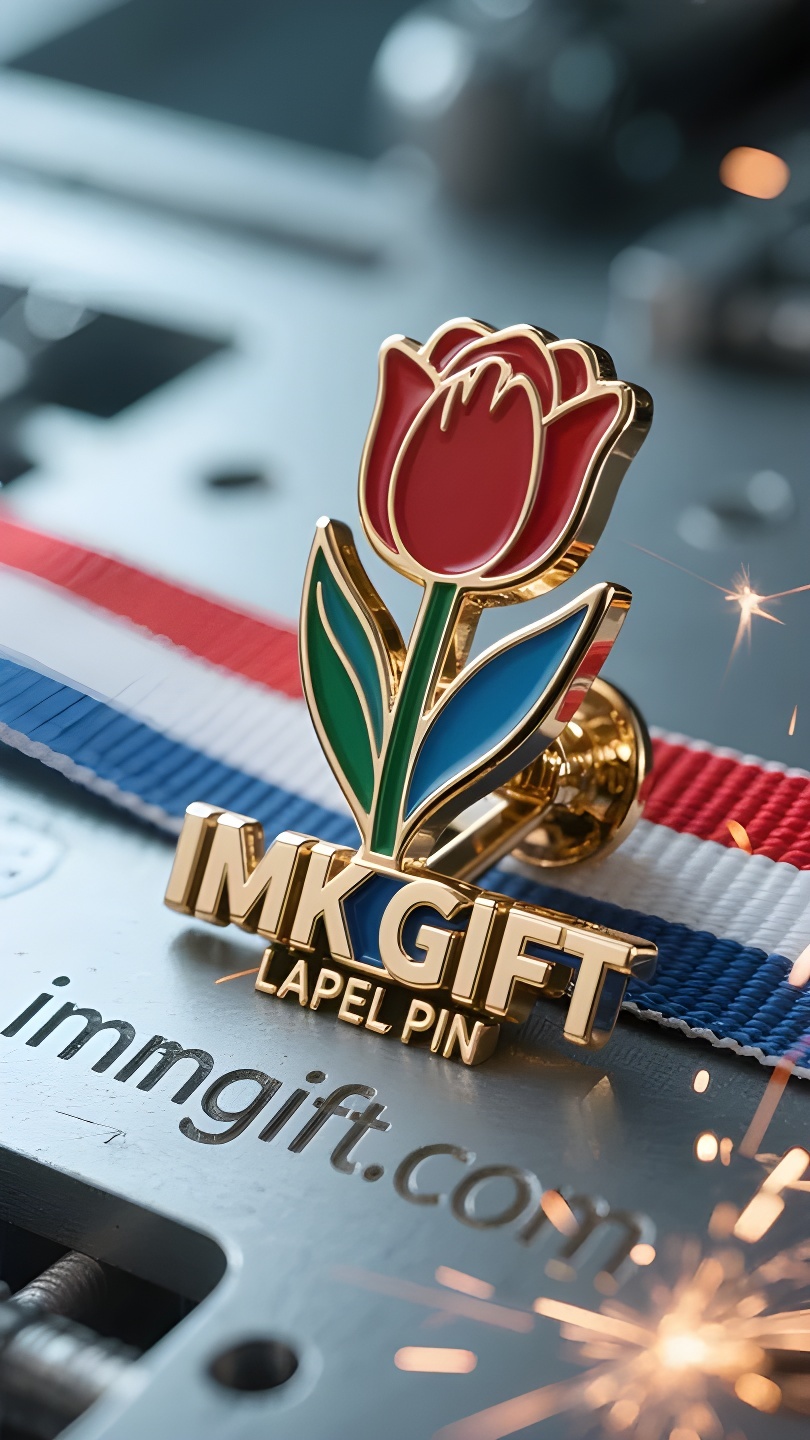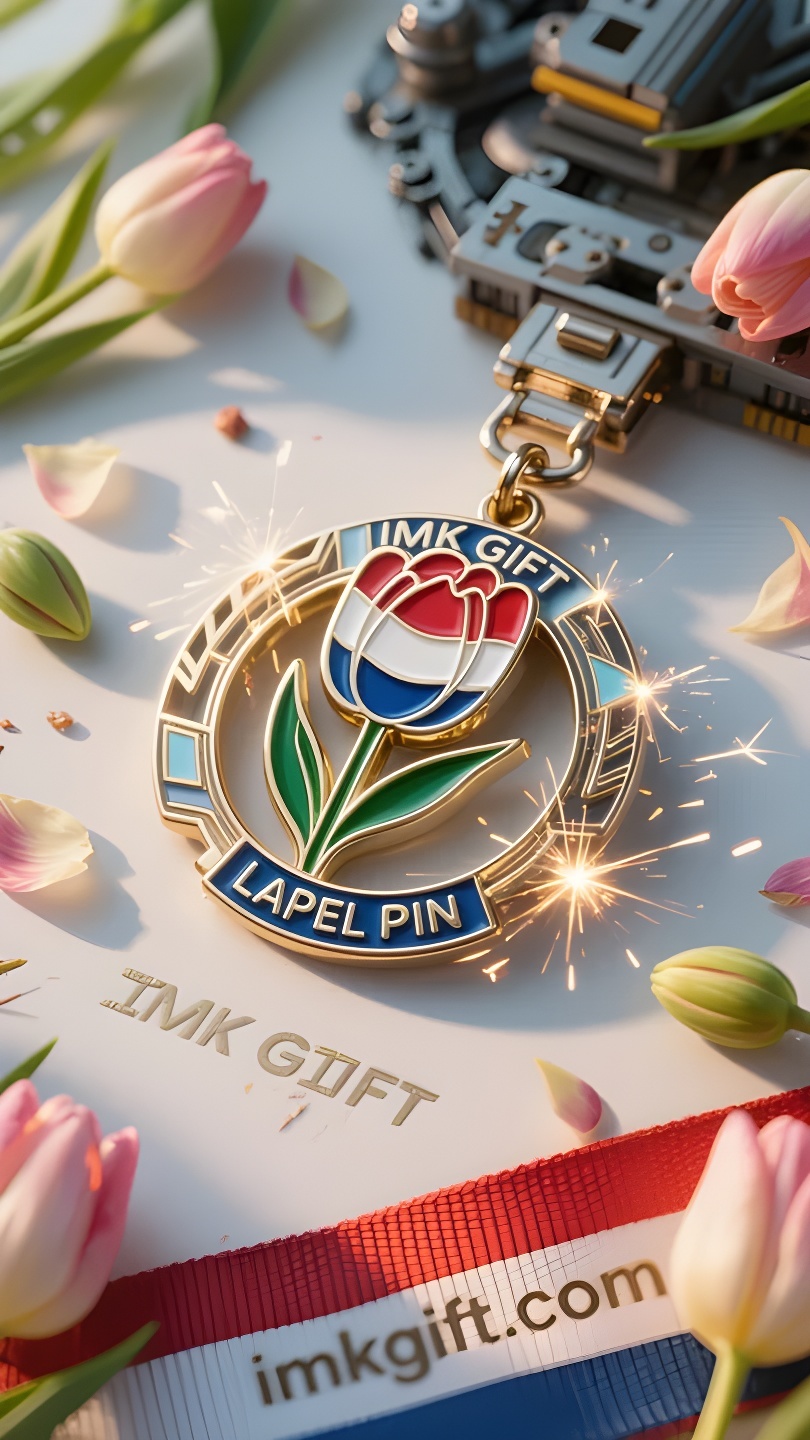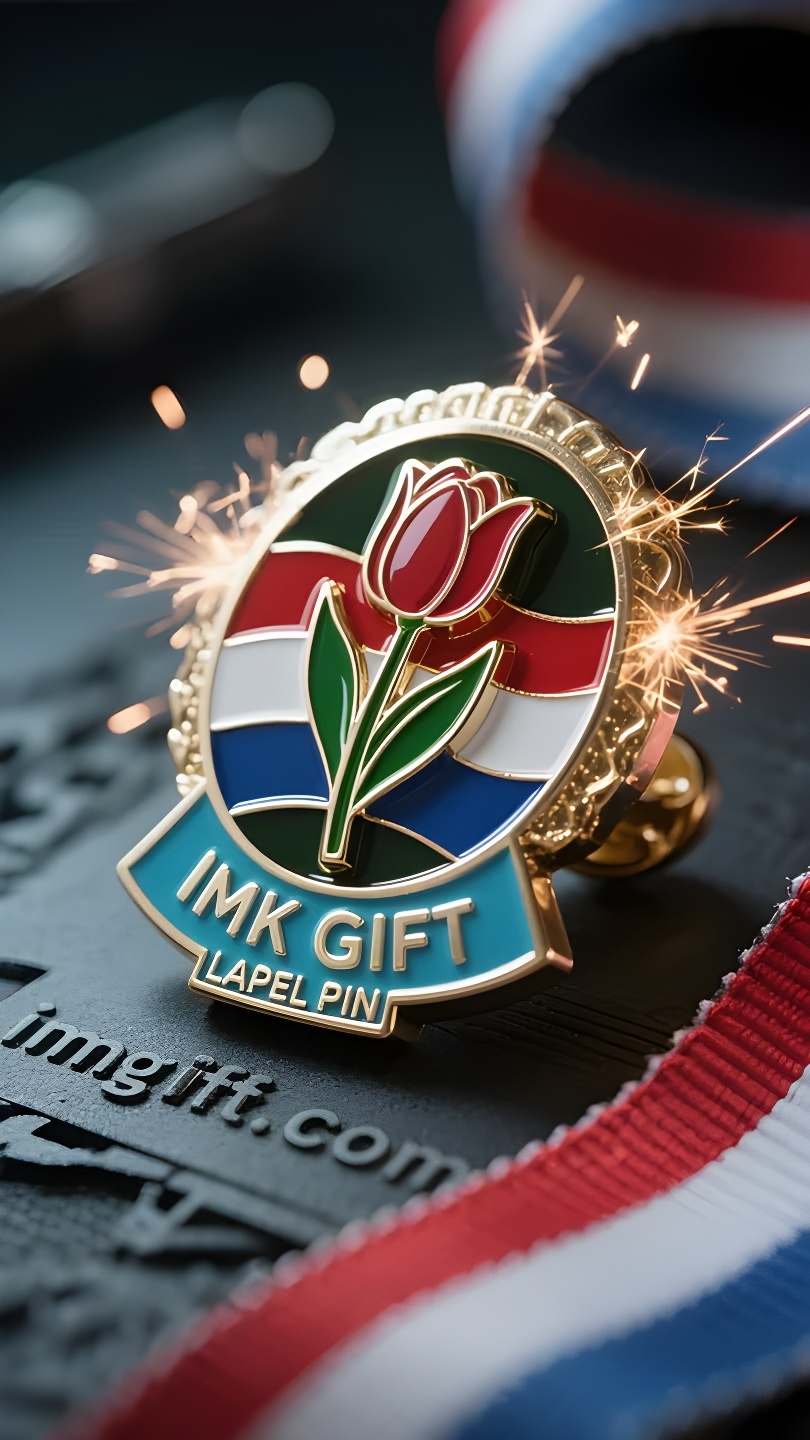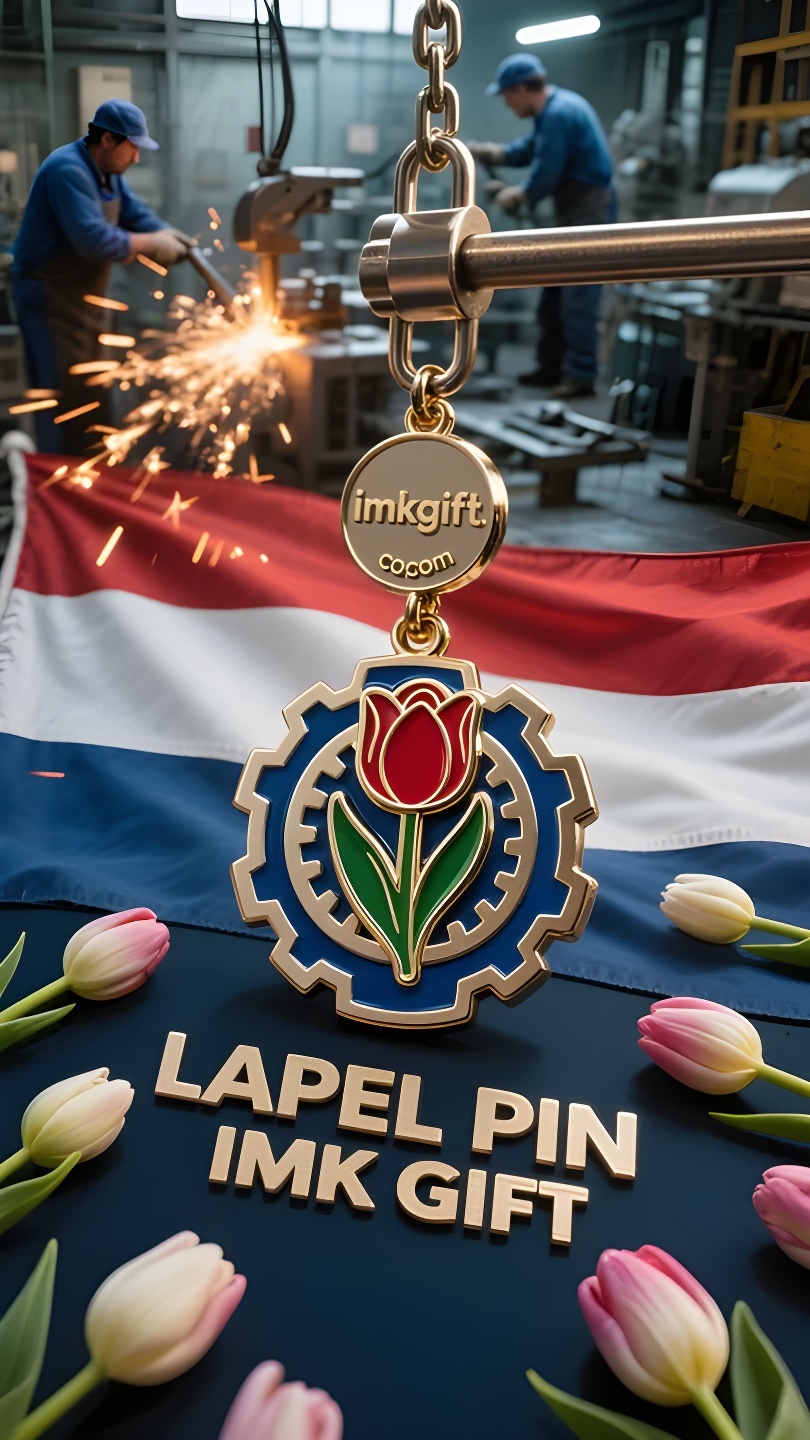in986-Totem-van-het-leven-in-de-oranje-golf
▼
Nederland wordt in april overspoeld met de oranje golven van de Koningsdagviering. Maar te midden van al deze vrolijkheid schuilt het nooit vervagende rood, wit en blauw van de nationale vlag en de eeuwige lente, vastgelegd in het tulpenembleem. De driekleurige banen van de Nederlandse vlag bewaken dit laagland al sinds de 16e eeuw: het scharlakenrood staat voor de bloedige moed van de opstandelingen, het zuivere wit voor de vrede die religieuze verschillen overstijgt en het azuurblauw voor de nationale veerkracht die leeft van de oceaan. Wanneer de driekleur langs de Amsterdamse grachten wappert, herinnert dat ons aan de trots van onze voorouders die met hun sloepen door het oog van de storm voeren. De tulpentotem die om het koninklijk embleem is gewikkeld, met de vijf bloemblaadjes die een zwaard omarmen, vertelt het verhaal van een meer verborgen kracht. De twee bloemblaadjes aan de bovenkant symboliseren de provincies Noord- en Zuid-Holland, de drie bloemblaadjes aan de onderkant vertegenwoordigen de provincies in het binnenland, zoals Utrecht, en het zwaard dat door het hart van de bloem gaat, verwijst naar de eed van eenheid. Dit symbool, geboren in de rook van tachtig jaar oorlog, transformeerde militaire verdediging in een wonder van bloeiend leven. Tegenwoordig zijn de oranje meeldraden van de tulp de carnavalskleur geworden van nationale feesten. Maar als je goed kijkt naar elke tulp die door de lentebries is ontwaakt, kun je in de rechte, groene stengels de ruggengraat van de rebellen van vierhonderd jaar geleden ontdekken, en in de dikke knoppen de ambitie van de handelsvloten uit de Gouden Eeuw om door de golven te breken. Als de Koningsdagboten met kinderen die oranje kroontjes dragen door het kanaal varen, zien we niet alleen de vreugde van het feest, maar ook de wijsheid van een natie die historisch leed omzet in nectar. Net zoals tulpenbollen in de winter diep begraven liggen in afwachting van een herboren leven, slagen de Nederlanders er altijd in om nieuwe levensvormen uit de grond te laten komen als het tij zich terugtrekt.
In April, the Netherlands was flooded with the orange waves of the King’s Day celebrations. Hidden in this jubilation is the red, white and blue on the national flag that never fades, and the eternal spring solidified in the tulip emblem. The three-color stripes of the Dutch flag have guarded this lowland since the 16th century: scarlet is the courage of the rebels soaked in blood, pure white is the peace that transcends religious differences, and azure blue is the resilience of the nation that makes a living from the ocean. When the tricolor flag rolls on the canal of Amsterdam, it always reminds people of the pride of the ancestors who drove a sloop through the eye of the storm. The tulip totem wrapped around the royal emblem is the image of five petals embracing a sword, telling a more hidden power – the top two petals symbolize the North and South Holland provinces, the bottom three petals represent inland provinces such as Utrecht, and the heart of the flower pierced by the sword points to the oath of unity. This symbol, born in the smoke of the Eighty Years’ War, transformed military defense into a miracle of blooming life. Today, the orange stamens of the tulip emblem have become the carnival color of national celebrations. But if you look closely at each tulip awakened by the spring breeze, you can find the backbone of the rebels four hundred years ago in the straight green stems, and touch the ambition of the merchant fleet in the golden age to break the waves in the plump buds. When the King’s Festival Ship carrying children wearing orange crowns sails through the canal, we see not only the joy of the festival, but also the wisdom of a nation that turns historical pain into nectar. Just as tulip bulbs are buried deep in the cold winter waiting to be reborn, the Dutch can always let new life totems break through the ground when the tide recedes.
四月的荷兰被国王节庆典的橙色浪潮淹没,而深藏在这片欢腾中的,是国旗上永不褪色的红白蓝,与郁金香徽章里凝固的永恒春天。
荷兰国旗的三色条纹自十六世纪便守护着这片低地:猩红是起义者浸透鲜血的勇气,纯白是跨越宗教分歧的和平,湛蓝是向海洋讨生活的民族韧性。当三色旗在阿姆斯特丹运河畔翻卷时,总让人想起先民驾着单桅船冲破暴风眼的豪情。而缠绕在王室徽章上的郁金香图腾,正以五片花瓣环抱利剑的形象,讲述着更隐秘的力量——顶端两瓣象征南北荷兰省,下方三瓣代指乌得勒支等内陆省,利剑贯穿的花心则指向团结的誓言。这个诞生于八十年战争硝烟中的符号,将军事防御转化为生命绽放的奇迹。
如今郁金香徽章的橙色花蕊,已化作全民庆典的狂欢色。但细看每一株被春风唤醒的郁金香,都能在挺直的绿茎中发现四百年前起义者的脊梁,在饱满的花苞里触摸到黄金时代商船队破浪的雄心。当国王节彩船载着戴橙色花冠的孩童驶过运河,我们看到的不仅是节日的欢愉,更是一个民族将历史伤痛酿成花蜜的智慧。正如郁金香球茎深埋寒冬等待重生,荷兰人总能在潮水退去时,让新的生命图腾破土而生。
▼
Contact Us
📞 Tel: +0086-760-85286839
📧 Email: sales3@imkgift.com








